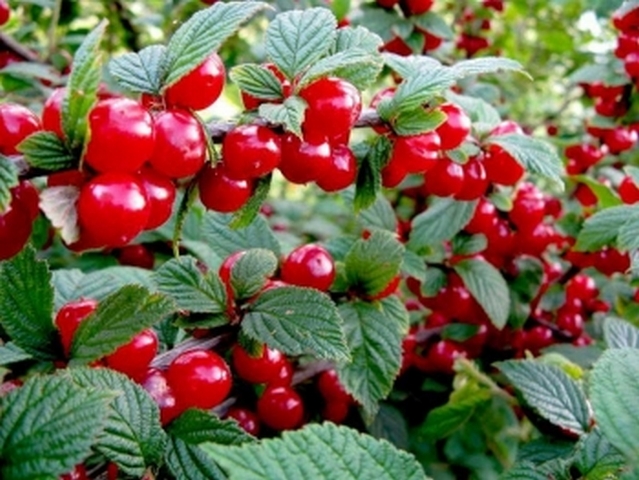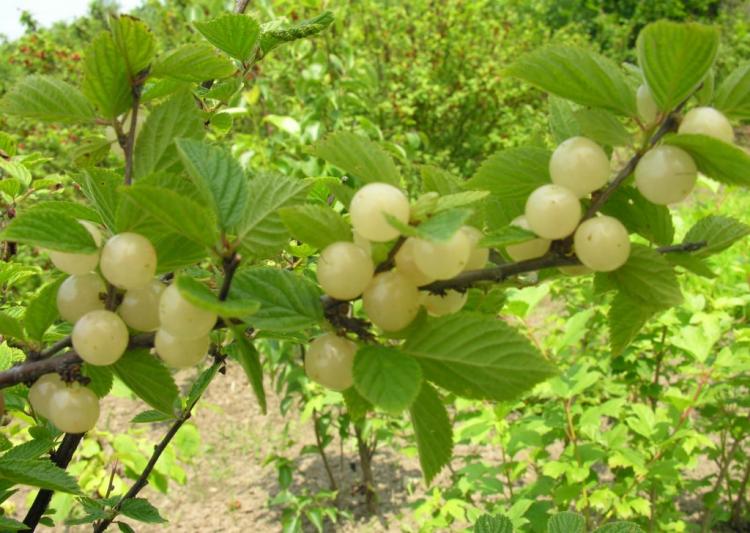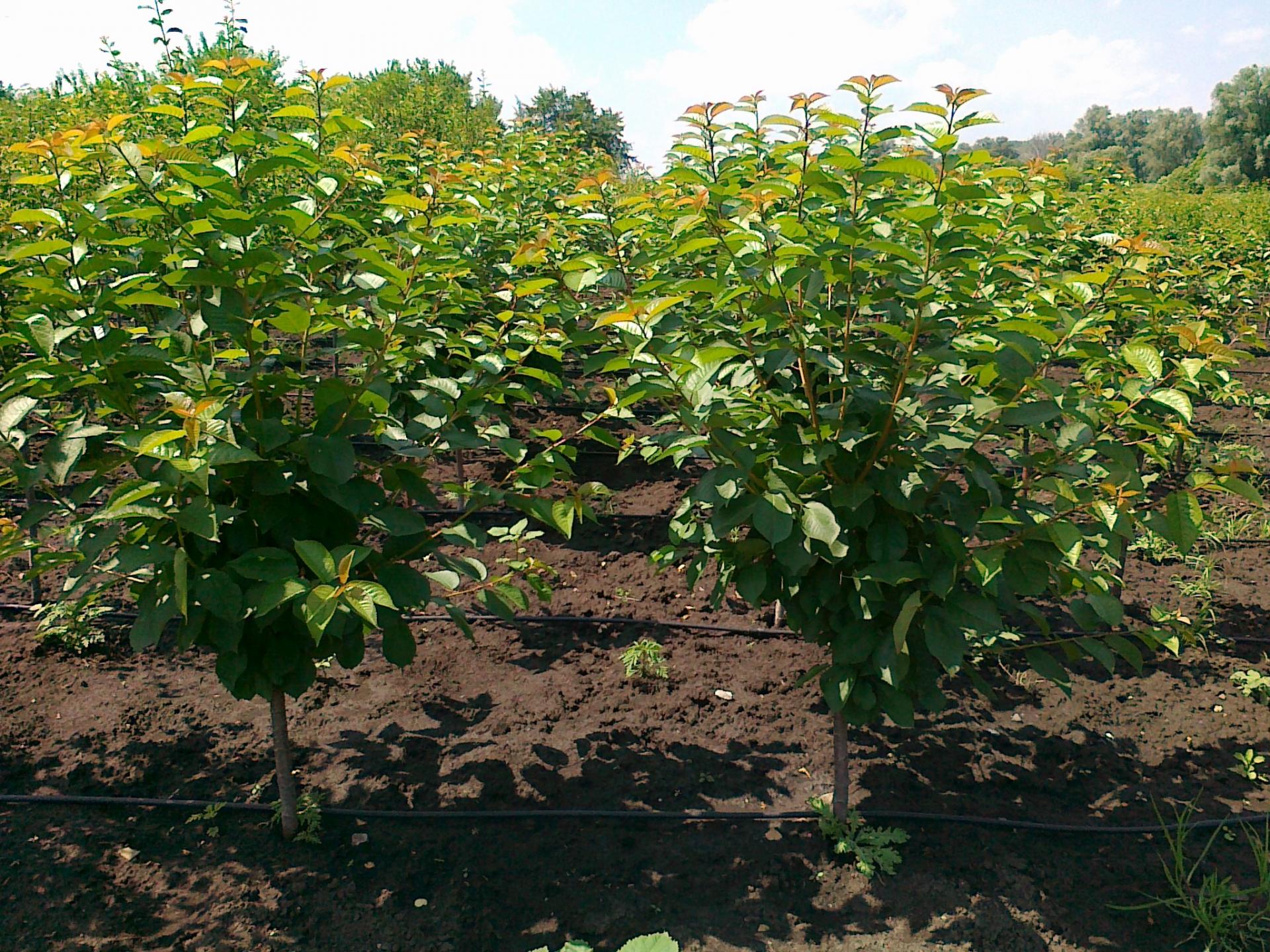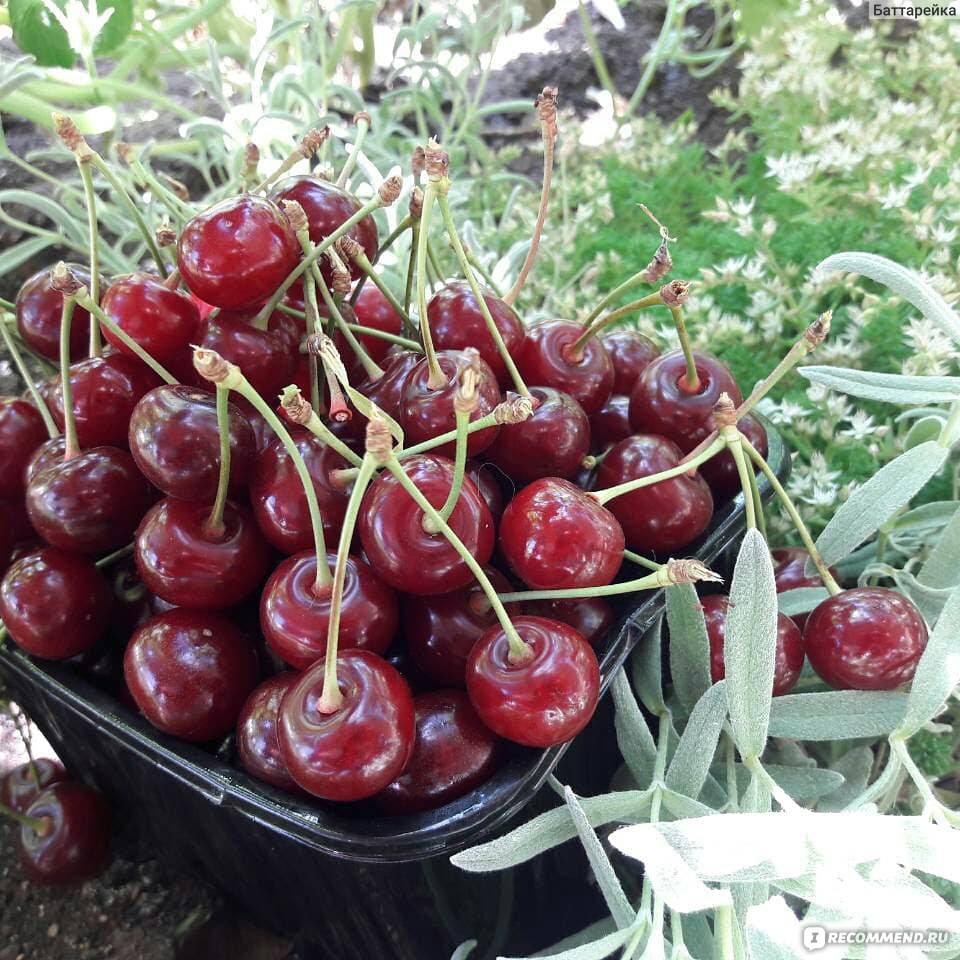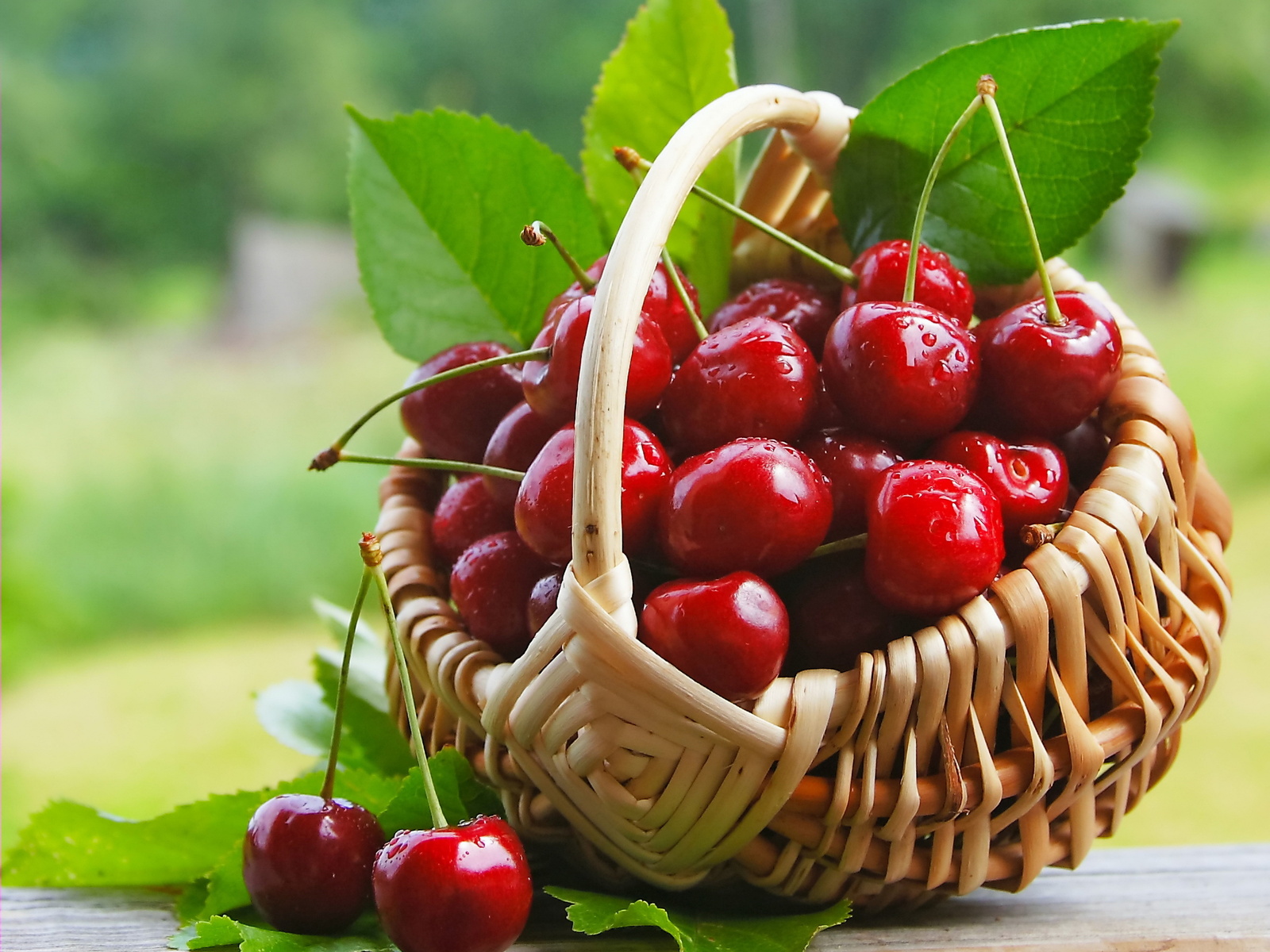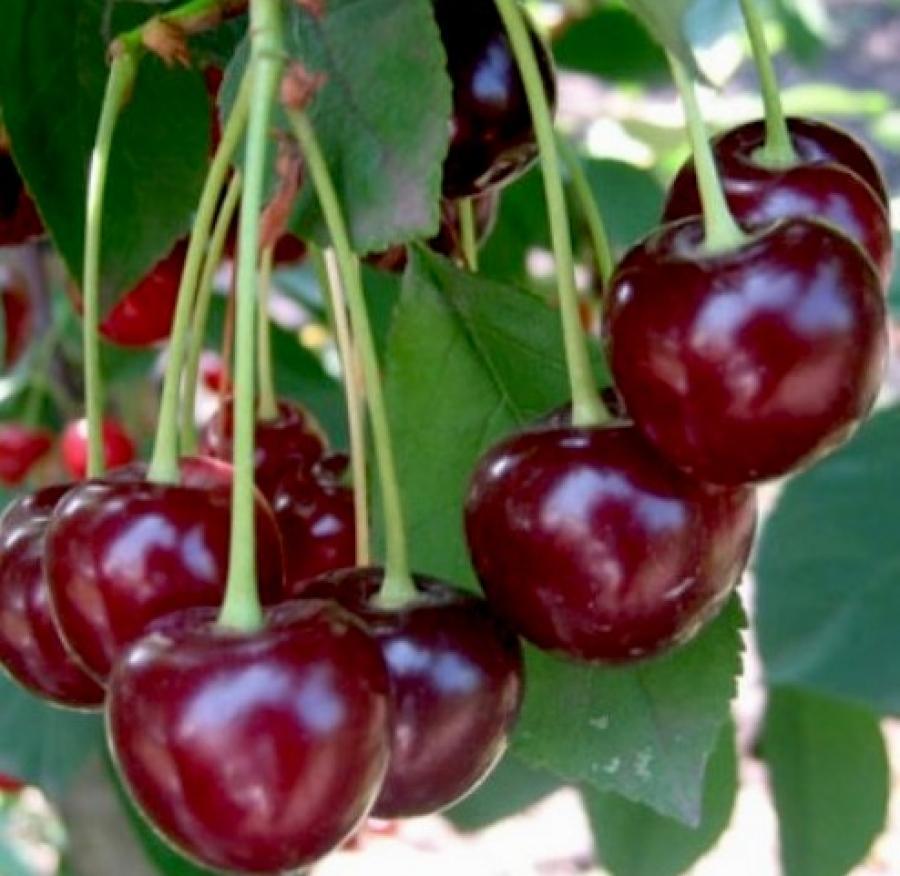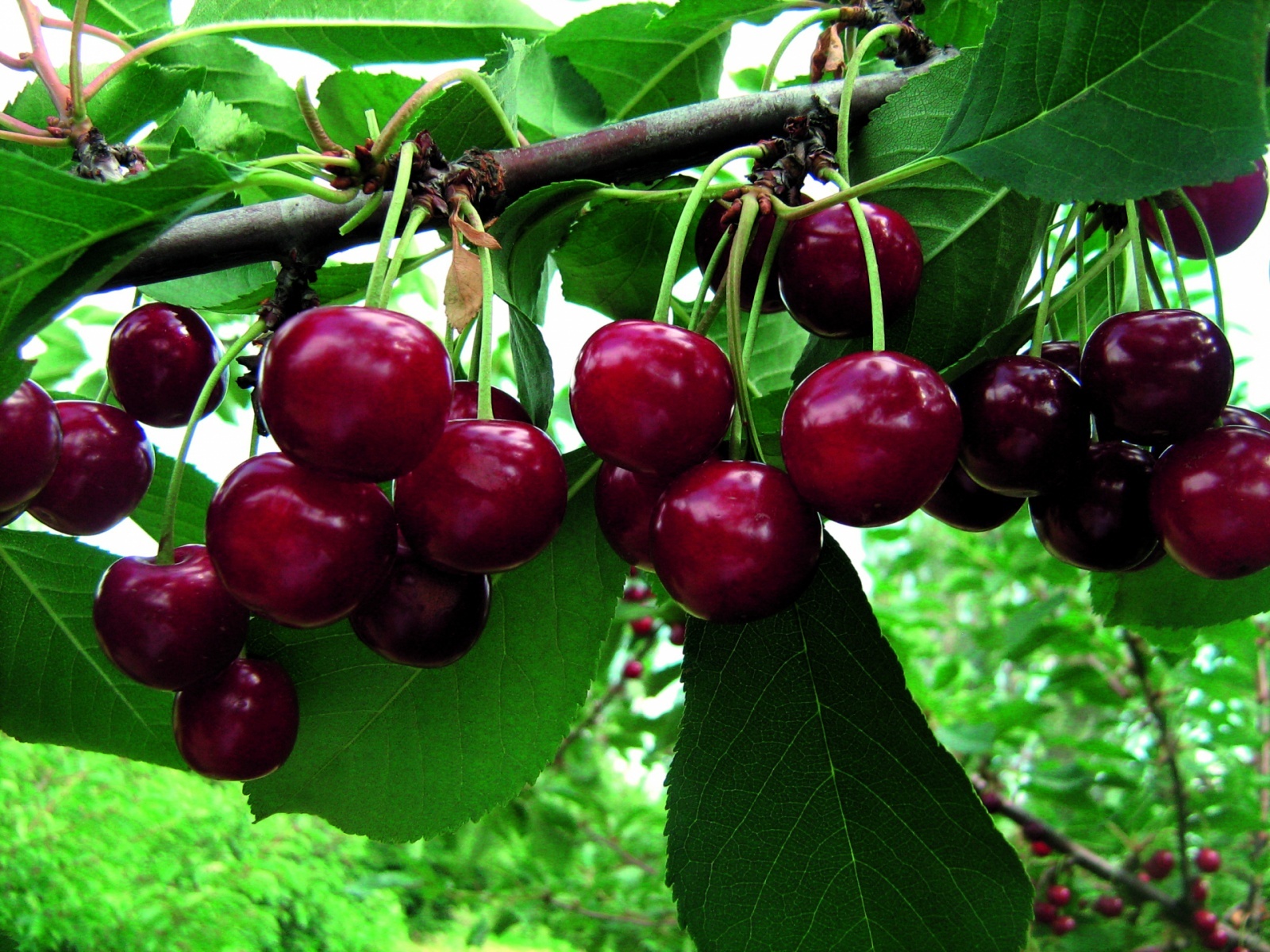Content:
Felt cherry has quickly gained popularity among European gardeners since it was first introduced from China to the islands of Great Britain in 1870. The natural area of growth of the fruit shrub includes the territories of China, Mongolia, Tibet, Korea, as well as some Indian provinces.
The versatility of the culture, its rapid growth and development, and most importantly, the undemandingness of the plant to care and growing conditions have contributed to the fact that Chinese felt cherry is now widespread almost everywhere.
Description of Felt Cherry
The shrub got its name for the abundance of felt-like villi that cover foliage, young branches, petioles and berries. The plant reaches a height of one to three meters. Its corrugated leaves with jagged edges are pointed at the ends. They are located on short, slightly noticeable petioles and grow up to 7 cm in length.
Felt cherry (Latin Prunus tomentosa) is a kind of cherry, currently belongs to the genus Plum (Latin Prunus) and the Pink family.
The fruit shrub has a superficial root system, located at a depth of 35-40 cm, and a dense crown with numerous rough branches. Felt or velvety cherries have a coppery brown bark that is darker in places. Its shoots are green or greenish brown.
With the onset of spring, when it’s time to bloom and the foliage on the branches has barely appeared, the felt cherry shrub is covered with a thick haze of pink or white flowers. In this case, the flowers on short stalks at first have a pink tint, but subsequently acquire an even white color.
Far Eastern cherry blossoms in early, mid or late May. At this time, the garden is filled with her delicate aroma. Abundant flowering continues for two weeks.
The seedling begins to bear fruit in the second year after planting. When propagated by seeds - in the fourth year of life, and when propagated by cuttings - in the third. On average, about 5 kg of berries can be harvested from one bush.
Fruits, for the most part, are red in color, depending on the variety, can be pink, white and even black. Their pleasant sweet taste has no sourness. Berries with a small pit inside ripen within two weeks, acquiring a characteristic softness and friability of the structure. However, some varieties, such as sweet cherries, can be quite dense. Ripening occurs in late July or early August.
Composition and application
Chinese felt cherry was not included in the State Pharmacopoeia of the Russian Federation and is not used in official medicine. However, its fruits and leaves contain many useful substances often used in traditional medicine and cooking.
The berries of a velvet cherry contain apple and citric organic acids, vitamins of the B and PP groups, carbohydrates.
It is believed that the use of the fruits of this shrub helps to normalize blood pressure, improves the functioning of the heart muscle and the digestive system.
The ascorbic acid contained in the felt cherry helps to strengthen the immune system, vitamin C counteracts viruses and infections, and vitamin P has a beneficial effect on the state of the vascular system. The nuclei of the bones contain an acid that can help prevent atherosclerosis. However, no official scientific research has been carried out to study the effects of felt cherry fruits on the human body, and the information provided above is based on the chemical composition.
For people watching their figure, it will be interesting to know that the berries of this fruit shrub are low in calories: 100 g of the product contains only about 50 Kcal (proteins - 0.9 g; carbohydrates - 10.5 g; fat - 0.3 g) ...
Felt cherries are widely used in cooking. Compotes, preserves, marmalades are made from berries. And how good a little cherry is as a finishing touch on some delicious dessert or cocktail!
A contraindication to use may be an individual intolerance to the body, ulcers, gastritis, high acidity. You should refrain from excessive use of cherry pits, since when they decompose in the body, they, mixing with gastric juice, form senic acid, which in large quantities can become poison.
The best varieties and their characteristics
Felt cherry is distinguished by its varietal variety. Each variety has its own characteristics and properties. There is a classification of Chinese cherries based on ripening dates:
- early;
- medium-fruited;
- late.
The best and most popular early-growing varieties are Natalie, Tsarevna, Children's, Fairy Tale. Planting dates here are from 15 to 20 May, and ripening dates are from 15 to 18 July.
Natalie... Variety characteristic: wide crown shape with medium density of branches. The fruits are large (4g), dark red with a sour-sweet taste and a stone, which occupies no more than 5% of the berry weight. It is considered a long-liver: the life of the bush is up to 18 years.
Princess- undersized, long-lived, fruitful variety (up to 10 kg per bush). Differs in winter hardiness, therefore it is often grown in the northern regions of the country.
Children... The bush does not grow more than two meters in height. Most of the cultivation takes place in the Far East. Refers to long-lived self-infertile varieties. The yield is high - up to 10 kg. The fruits are sweet and large.
Fairy tale... Low variety (up to 1.3 m in total) with an oval bush. Fruits are very large, burgundy rich in color with red pulp. The yield is high: more than 10 kg per bush.
Among mid-season varieties, such varieties as Leto, Belaya and Alisa can be distinguished.
Summer... This winter-hardy variety is considered one of the best. It is distinguished by the unusual shape of small, light red fruits that resemble a cylinder. Productivity - about 8 kg per bush.
White... Medium-high oval shrub with dark brown branches. Differs in white color of ripe small fruits and sweet taste with hardly noticeable acidity. A very productive variety - up to 11 kg per bush.
Alice... Grows up to 1.5 m in height. It has large elongated fruits with a very sweet taste. The berries are pubescent and colored in a maroon color. The kernel of the berries is not separated from the pulp. After picking, the berries of this variety are not stored.
The best among the late ones are Delight and Damanka.
Delight... The fruits of the variety are large, oval, with a beveled top. The pulp is juicy, red. The bone does not come off. Sweet taste (sugar - 8%). These fruits are good for canning and adding to baked goods.
Damanka -withdrawn recently. Received recognition as the best in taste among all varieties of felt cherries. The fruits are maroon and even almost black. The bush grows up to 1.5 m at a very fast pace. The variety is winter-hardy with an average yield.
Planting and caring for felt cherries
For this culture, loam and sandy loam with neutral acidity will become the optimal soil, so peatlands are not suitable for it. Chinese cherry does not tolerate waterlogging. To plant a shrub correctly, you need to know several important points.
- Planting should be carried out best in early spring or already in autumn; for this, annual seedlings with a fairly wide root system are selected. Before planting, the seedling is cut 20 cm, and the cuts are processed with crushed activated carbon.
- Given the structure of adult plants on the site, it is better to plant no more than three seedlings at a distance of 1.5 to 2 m, depending on the estimated size of the developed bush.
- In a hole prepared for a seedling, 50 cm deep and wide, it is necessary to add about 3 buckets of organic matter to enrich the soil and 50 g of phosphorus, 400 g of lime, 25 g of potassium.
- The root system should be treated with a weak solution of manganese, all dry or otherwise damaged areas of the root must be carefully removed with secateurs. Then plant it to a depth of about 50 cm.
Care for all varieties of felt cherry is about the same. It traditionally consists of such necessary actions as:
- Top dressing, which is carried out immediately after the flowering period every year. For this, mineral fertilizers are applied along the edge of the trunk space: 25 g of potassium, 35 g of nitrogen and 75 g of phosphorus.
- Regular watering at the rate of 7 liters of water for one plant once a week. The water needs to be warmed up due to the sensitivity of many varieties to low temperatures.
- Pruning is carried out in order to rejuvenate the bush. At the same time, only 10-15 shoots are left. As a result of pruning, each annual branch that reaches 60 cm is shortened by one third.
- Certain varieties of felt cherries require a pollinator to flower. For example, Alice and Natalie cannot pollinate on their own, so other trees of the Plum genus are planted near them, or there is 1 self-fertile bush and 2 self-fertile bush nearby.
Prevention and treatment of diseases
The disadvantage of the overwhelming majority of felt cherry varieties is their low resistance to various kinds of diseases.
The most common Chinese cherry diseases:
- Fruit rot, or moniliosis. Brown spots appear on the fruits, after which the pulp of the berries acquires a spongy structure. Soon, if you do not take action, the fruits on the branches begin to dry out or rot, becoming carriers of the disease.
- The defeat of aphids. This is an invasion of colorless light microscopic bugs on the lower surface of the leaves. Aphids feed on the sap of leaves and fruits, destroying them and leaving huge holes behind them.
- Clasterosporium - This is a disease accompanied by the appearance of brown spots on foliage, shoots and fruits. Subsequently, holes are observed on the berries, and they begin to dry out.
- Fruit moth Is a fruit-eating caterpillar. She gnaws the passages inside the pulp, eating it. The consequences of the life of the voracious caterpillar are manifested in the form of dents and darkened spots on the berries.
You can prevent the Chinese cherry from drying out, curing it from moniliosis and clotterosporia, using fungicides that are used during the flowering period.
But to rid the plant of aphids and moths will help treat the affected fruit bush with soapy water. To do this, 100 ml of liquid soap is dissolved in a ten-liter bucket of warm water, and then the plant is thoroughly sprayed with the resulting solution.
The varietal variety of Chinese cherries makes it possible to grow them in regions with completely different climates, almost everywhere. And this is an undoubted virtue of culture.The pluses of growing felt cherries include the decorativeness of the plant, and its frost resistance, and high yield, and excellent taste. Among the minuses, of course, are the weak resistance of Chinese cherries to diseases and pests, as well as the self-infertility of a number of varieties, for the successful fruiting of which pollinators will be needed.

